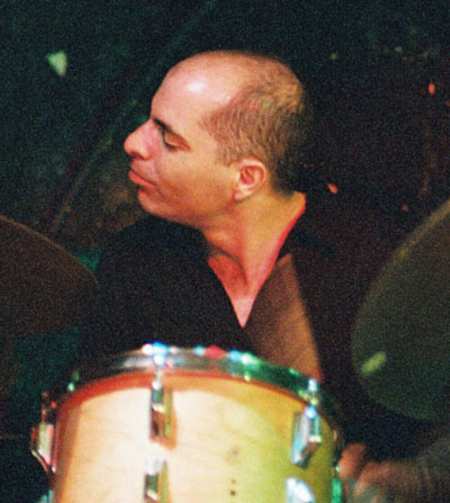
NOVEMBER 2005
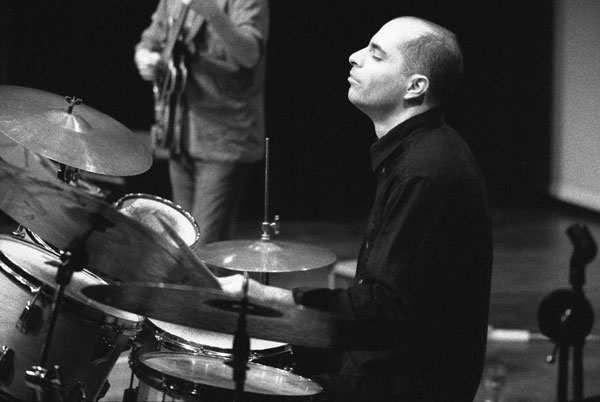
We are Falling
Jazz CD Review:
Asaf Sirkis & the Inner Noise
KCD 5150, 2005
by Rory Braddell©2005
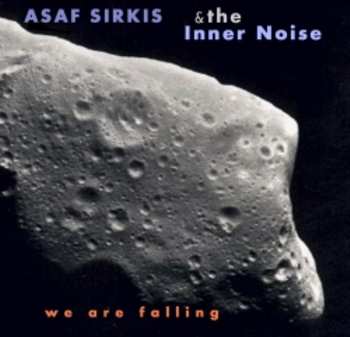
The composer and drummer Asaf Sirkis was born in Israel in 1969. and it was there that he established his solo career. He recorded his first solo album "One Step Closer" in 1995, playing his own compositions with the "Asaf Sirkis Trio". He later developed his "Inner-Noise" project in Israel, 1997-98, but revived it after he had relocated to Britain in 1999.
The first "Inner Noise" album was recorded using a real church organ at St. Michael's church Highgate in March 2003 and was received as something fairly innovative and unusual. Sirkis, who cites Olivier Messiaen's organ music as a major influence, composed music that was not that easy to categorise into a general jazz context. His latest album "We are Falling" follows on and continues in a similar vein, also using the same line up of musicians: Asaf Sirkis on drums, Steve Lodder on keyboards and Mike Outram on guitar.
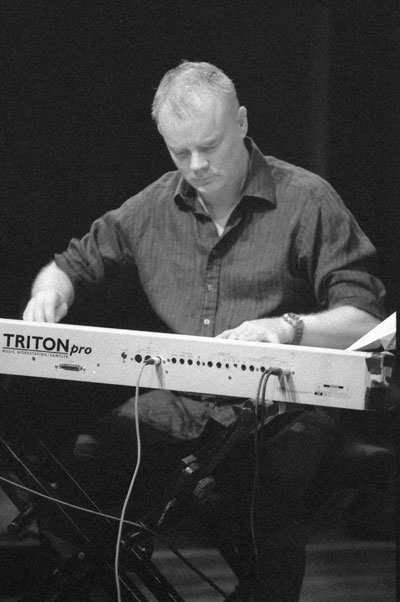
An important difference is that Lodder uses a special keyboard, fitted with base pedals similar to
those of a church organ, which makes it easier to tour and play as a group. The sustaining power of
the organ within the context of jazz, creates a sound that is very unique. The project distances itself from having a purely "jazz" identity and the classical music and rock influences are apparent.
Sirkis is quoted by Nick Lea of Jazzviews as saying: "the essence of music or non-identity in it is
most interesting for me. Not the language or the style.What I'd like to point out through music is utterly simple - I am a human being and it is only when identity stops can music begin (Jazzviews, July 2005).
When I picked up "We are Falling" for first time, I was taken with an image of asteroids printed on the front cover with an accompanying quote by Sun Ra: "This music is about another to-morrow, another kind of language .speaking things of blackness about the void, the endless void, the bottomless pit surrounding you." My first impression was reinforced by initial feelings about the music. The opening track "Another Being" reminded me of Bach's prelude in F minor, which is used at the beginning of the classic science film "Solaris". The film, created by a Russian film director Tarkovsky, is often compared to Stanley Kubrick's "2001 AD," but it is a more intense psychological journey, presenting an inward looking analysis of human nature.
The
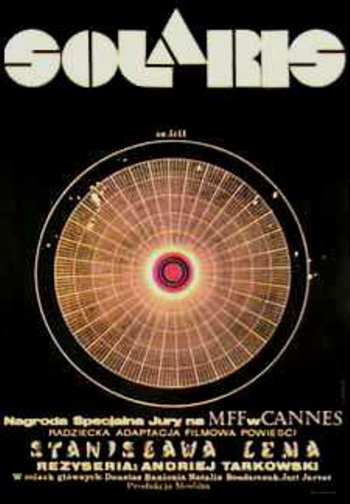 final
track "Ida & Dactyl" reminded me of the end
of the film, where we are presented with an image of an
island in the ocean of Solaris, which seems like an
endless void beyond worldly reality. Sirkis' compositions
made me think of Tarkovsky's frequent references to
moving water. The music, like moving water, embodies the
principle of change, but also affirms the idea of a
repeating cycle.
final
track "Ida & Dactyl" reminded me of the end
of the film, where we are presented with an image of an
island in the ocean of Solaris, which seems like an
endless void beyond worldly reality. Sirkis' compositions
made me think of Tarkovsky's frequent references to
moving water. The music, like moving water, embodies the
principle of change, but also affirms the idea of a
repeating cycle.In "Another Being" there are recurring motifs, evocative of ostinato, which provide unifying
repetition. These are supported by the very low, harmonic, tones, supplied by the bass pedal, which project the music forward into space. This procedure is reminiscent of techniques used by minimalist composers like Terry Riley, Steve Reich, Philip Glass and John Adams, who experimented with tape loops and recurring fragments of melody. However, Sirkis' music is more rhythmically flexible, which gives a more open-ended impression of continuous motion. The influence of Messiaen's music is strong, and I noticed a parallel in Sirkis' music to "Quartet for the End of Time," which, coincidently, I was listening to at that time. Messiaen wrote the following forward to his work: "Modes, which produce a kind of tonal ubiquity in harmonic and melodic terms, bring the listener closer to eternity in space, to infinity. Special rhythms without any specific time signature play a powerful role in taking the listener away from the temporal sphere" This distance between the temporal and the spatial is apparent in "Galactic Citizen." The first of the two pieces combines repeating motives with melodically and rhythmically freer musical lines. This is like Messiaen's "Liturgy of Crystal, which is a combination of a harmonic modal procedure and flexible additive and non-retrogradable rhythms. I felt a similarity between the sustaining bass tones
of "Galactic Citizen" and Messiaen's harmonic chordal succession - a backdrop for a modal
melodic cycle that exists independently. These two elements have a point of reference at which they converge, but it is not musically punctuated in a traditional sense. It gives an effect of forever pulling the music into infinity, because once we have reached the end of a cycle we begin again on the same journey. At the end of "We are Falling," we have reached the end of a cycle with Ida & Dactyl. This piece reminds me of Messiaen's "In praise of the immortality of Jesus," which elaborates a lyrical violin line over a series of cyclic chords.
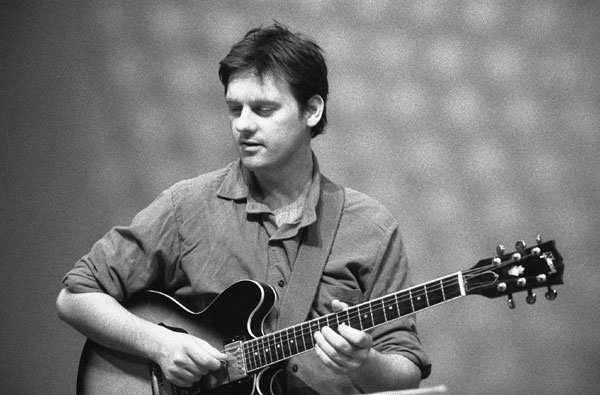
In Ida & Dactyl, Mike Outram's expressive guitar playing is accompanied by long, deep bass
tones. This is intensified in the second part of the track into some of the best jazz music on the album. Steve Lodder elaborates with an excellent piano solo, played in tandem with the drums, which builds up a fabulous climax. After a long silence, the music comes back with a meandering
melodic line that is briefly cut short on one final long tone that just hangs, indicating the end, but without the musical completion that we are normally used to.
The pace is stepped up on the faster tracks on the album, such as "Life Itself," which is a far more rock oriented sound. Similarly, "We are falling" also provides an opportunity for an even more intense relentless style of drumming and virtuoso solo guitar playing. This reminds me of the playing of Jimi Hendrix, Miles Davis, and more recently, the work of Nguyên Lê. These faster tracks provide opportunities for virtuosity of playing and jazz solos that intersperse the slower material giving a kinetic overall sense of musical form. They tend to draw the music on to a level that is much more formidable and energetic.
The level of musicianship on the album is very high as the group play in a very cohesive and
complimentary manner. Sirkis's drumming varies from an expressive subtlety on the slow tracks, which is maximised by timbral use of cymbals, to the tight relentless virtuosity of the faster pieces. I think that "We are Falling" is of real attraction to listeners who are interested in new sounds and the fusion of musical styles. It is a definite magnet for an audience wanting to expand their musical experience beyond the limitations of style, and it is an album that suits the individuality of modern musical taste.
Rory Braddell, October 2005
